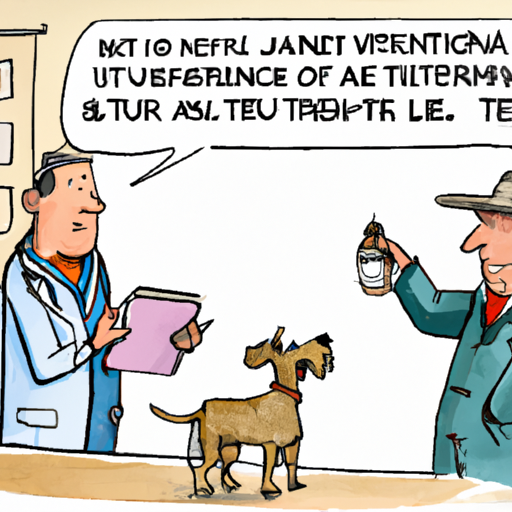As a caregiver, you’re not just responsible for your own health, but also for the health of your beloved pets. Just like humans, dogs can also suffer from Urinary Tract Infections (UTIs). This piece will guide you through the process of identifying, treating, and preventing UTIs in your canine friend.
What is a UTI and How Can It Affect Your Dog?
A UTI is an infection that can occur in any part of the urinary system: kidneys, bladder, ureters, and urethra. This infection can cause a variety of symptoms in your dog, including frequent urination, straining to urinate, blood in the urine, and discomfort during urination.
| Symptoms | Description |
|---|---|
| Frequent urination | Your dog may urinate more often than usual. |
| Straining to urinate | You may notice your dog straining or showing discomfort when trying to urinate. |
| Blood in the urine | The urine may appear dark or reddish, an indication of blood. |
Recognizing the Symptoms of UTI in Dogs
You know your dog better than anyone. If you notice any changes in their behavior, you should pay close attention. Here’s what to look out for:
- Urinary accidents in the house: This might be one of the first signs you notice. If your house-trained dog starts having accidents, a UTI could be the cause.
- Changes in urine: Dark urine, blood in the urine, or a strong smell can all indicate a UTI.
- Behavioral changes: If your dog seems unusually lethargic or shows signs of discomfort or pain, it’s time to consult your vet.
How to Treat UTIs in Dogs
Once you’ve identified the symptoms, it’s crucial to seek veterinary care. Your vet will likely prescribe antibiotics to clear the infection. Alongside this, there are steps you can take at home:
- Encourage hydration: Make sure your dog always has access to fresh, clean water. This will help to flush out the bacteria causing the infection.
- Provide a balanced diet: A healthy diet can boost your dog’s immune system and help them fight off infection.
- Regular toilet breaks: Regular opportunities to urinate can help your dog clear the infection more quickly.
Preventing UTIs in Dogs
Prevention is better than cure. Here are some ways to reduce the risk of UTIs in your dog:
- Maintain proper hygiene: Regularly cleaning your dog’s genital area can help prevent bacteria from entering the urinary tract.
- Provide plenty of fresh water: Hydration is key in preventing UTIs. Always have fresh water available for your dog.
- Regular vet check-ups: Regular check-ups with your vet can catch UTIs before they become serious.
FAQs
Q: Can UTIs in dogs resolve on their own?
A: While mild UTIs might resolve on their own, it’s always best to consult a vet if you suspect your dog has a UTI.
Q: Can I prevent UTIs in my dog?
A: Yes, by maintaining proper hygiene, providing plenty of fresh water, and regular vet check-ups, you can reduce the risk.
Q: Are some dogs more susceptible to UTIs than others?
A: Yes, female dogs, older dogs, and dogs with diabetes are more susceptible to UTIs.
Remember, as a caregiver, your vigilance can make all the difference in your pet’s health and happiness. By recognizing the signs of a UTI and seeking prompt veterinary care, you can ensure that your furry friend remains happy and healthy.



